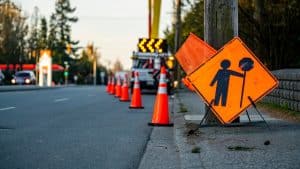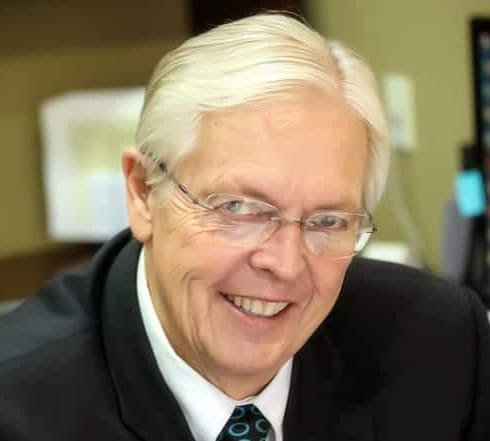Fargo-Moorhead Metro COG Has Its Work Cut Out for It
 When a city focuses on traffic safety, it helps prevent accidents and keeps people from getting injured. It also builds trust among the people living there, making the community stronger and more connected. Fargo-Moorhead Metro Council of Governments (FM Metro COG) seems invested in enhancing the safety of the streets and highways in the area as they recently asked for public commentary on where the region’s infrastructure was lacking to eventually make the roads safer. With comments and surveys now submitted, we hope this information can be put to good use.
When a city focuses on traffic safety, it helps prevent accidents and keeps people from getting injured. It also builds trust among the people living there, making the community stronger and more connected. Fargo-Moorhead Metro Council of Governments (FM Metro COG) seems invested in enhancing the safety of the streets and highways in the area as they recently asked for public commentary on where the region’s infrastructure was lacking to eventually make the roads safer. With comments and surveys now submitted, we hope this information can be put to good use.
What is FM Metro COG up to?
Recently, the FM Metro COG sought feedback from pedestrians, cyclists, drivers, and anyone using the roads regarding the safety of streets, sidewalks, and intersections in the Fargo area as part of their Regional Safety Action Plan. An interactive map allowed participants to share comments on traffic issues, accidents, near-misses, hazardous situations they have encountered or witnessed, and suggestions for improvement. Additionally, Metro COG encouraged people to take a brief survey, providing information on their travel habits and experiences related to road safety in the metro area. The goal: to leverage the collective feedback to enhance road safety and decrease severe car accidents.
What public feedback revealed
The survey is closed but the interactive map remains, enabling users to explore comments from others in the community regarding their experiences. According to the comments, some specific locales may be more problematic than others.
For example, there are numerous comments from certain areas, including the interchange between interstate 29 and 94, and the downtown area along North Broadway.
The I-29/I-94 interchange
Traffic is high in the I-29/I-94 interchange, and it’s likely to increase. According to Inforum:
- By 2045, Fargo-Moorhead’s population is projected to increase from 258,000 to 342,000.
- Traffic on the busiest section of I-29, between 13th Avenue South and I-94, is expected to increase from 78,000 vehicles per day to 116,000 vehicles per day, according to Metro COG projections.
- Similarly, traffic volumes along I-94 are projected to increase. The busiest segment of I-94 in the metro area is between University Drive South and 25th Street South, which planners expect will increase from 84,000 vehicles per day to 108,000 vehicles per day.
Highway interchanges like this one are risky for several reasons. First, the way the lanes come together and split apart can make driving complicated. Drivers must make quick decisions, especially in heavy traffic. Merging smoothly into traffic while watching the speed and distance of other cars can be difficult and lead to accidents if drivers don’t yield or if they make other errors in judgment.
Second, because highways usually have fast-moving traffic, any mistakes in interchanges can be more serious. The need to speed up or slow down quickly when entering or leaving the highway can cause sudden changes in vehicle speed, increasing the chances of rear-end collisions. In addition, finding the right openings in traffic during the merging process can be challenging.
In addition, the highway and interchanges are often subject to construction and work zones, and the same is true of this interchange, as it was scheduled to begin roadwork in the summer of 2023. With the addition of large construction trucks and new driving patterns, the risks only increase.
To be safer, interchanges must have well-designed layouts, clear signs, and be the subject of public awareness efforts to help drivers navigate these areas more carefully.
North Broadway and downtown
North Broadway received complaints concerning walking and biking since the downtown area of Fargo sees a lot more foot traffic and slower traffic than the highway.
Drivers in the downtown area face challenges due to the mix of pedestrians, cyclists, and other vehicles sharing the roads in a confined space. The frequent stops, starts, and turns typical of downtown driving can lead to a higher risk of accidents. Pedestrians encounter risks as they navigate busy sidewalks and cross streets. These circumstances increase the potential for accidents, especially at intersections where the interaction between pedestrians and vehicles requires heightened attention from all parties involved.
Biking in downtown Fargo poses its own set of risks. Cyclists often contend with the close proximity of cars, making it essential for both drivers and cyclists to be vigilant. Limited designated bike lanes may force cyclists to share the road with vehicles, increasing the likelihood of collisions. Additionally, the need to navigate through traffic and contend with parked cars adds to the complexity.
At Larson Law, we’re here to assist you if you’ve been hurt in a car accident, whether it happened on a highway interchange or in downtown Fargo. We know accidents are difficult, especially in heavy traffic. We’re here to help you understand your rights and ensure you get fair compensation for medical bills and lost wages. If you’ve been injured in a car accident, give us a call in Fargo, or use our contact page to schedule a free consultation. We handle accident cases on a contingency fee basis, which means we don’t get paid until you do. Our offices are located in Fargo, Bismarck and Minot.

Mark Larson is a Certified Civil Trial Specialist and Certified Civil Pre-Trial Specialist focusing on personal injury, car accidents, wrongful death, and oil field claims. Since 1979, Larson Law has served the injured throughout North Dakota. Read more about Mark V. Larson.
